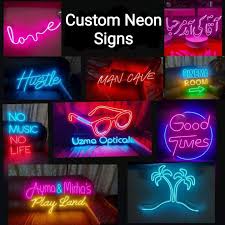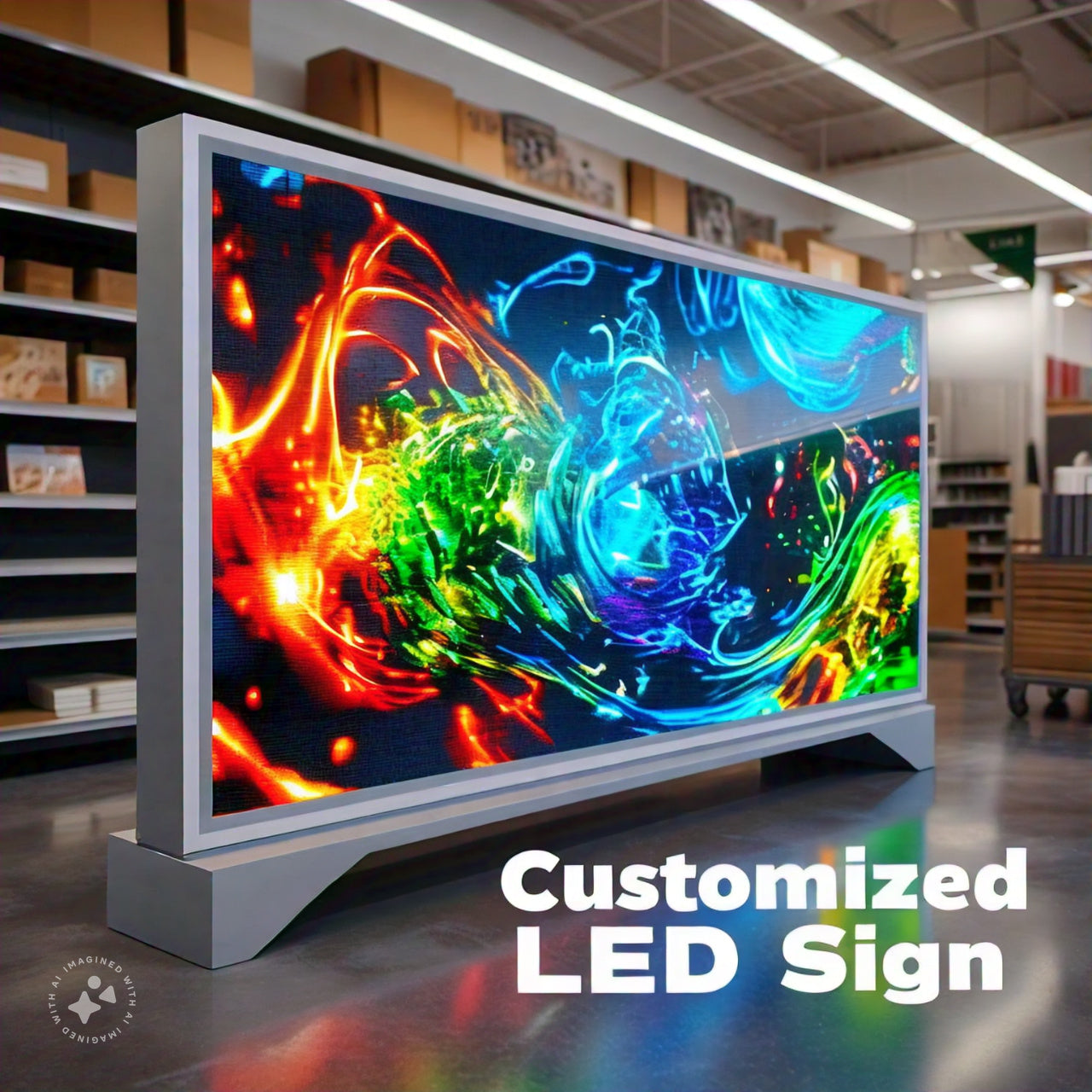Introduction to Custom LED Light Signs
Custom LED light signs have become increasingly popular for businesses and individuals looking to enhance their branding and marketing efforts. These signs are not only visually striking but also versatile and energy-efficient. Understanding the key considerations for designing and creating custom LED light signs can help businesses maximize their impact and effectively communicate their messages.
1. Understanding the Purpose of the Sign
Before embarking on the design process, it’s crucial to define the purpose of the LED sign. Common uses include:
- Brand Promotion: Highlighting the company’s logo and values.
- Advertising: Promoting products, services, or special offers.
- Directional Guidance: Helping customers navigate a space.
- Informational: Displaying operating hours, contact information, or announcements.
Understanding the specific goal of the sign will inform its design, size, placement, and content.
2. Choosing the Right Location
The location of the sign plays a significant role in its visibility and effectiveness. Considerations include:
- Visibility: Ensure the sign can be easily seen from various angles and distances. A sign placed too high, too low, or behind obstacles may go unnoticed.
- Foot Traffic: High-traffic areas are ideal for maximum exposure. Analyze where potential customers are most likely to see the sign.
- Lighting Conditions: Brightly lit environments may require more vibrant colors or higher brightness settings to stand out against the background.
3. Design Elements

Designing a custom LED light signs involves several critical components:
- Size and Scale: The size of the sign should align with its intended purpose and location. Larger signs can be seen from farther away, while smaller signs may be more appropriate for close viewing.
- Color and Contrast: Bright colors and high contrast enhance visibility. LED lights offer various colors, so choose hues that resonate with your brand identity and are legible against the background.
- Font Style and Size: Clear, bold fonts are essential for readability. Avoid overly decorative fonts that may be difficult to read from a distance.
- Graphics and Imagery: Incorporate logos or images that enhance the sign’s message without cluttering the design. Simplicity often yields the best results.
4. Material Considerations
The materials used in creating LED light signs impact their durability, appearance, and overall quality:
- Sign Face: Common materials include acrylic, polycarbonate, and metal. Acrylic is lightweight and versatile, while metal can provide a sleek, modern look. Polycarbonate is known for its strength and UV resistance.
- Frame and Mounting: Ensure the frame material is sturdy enough to support the sign’s weight and withstand environmental factors if placed outdoors.
- LEDs: High-quality LEDs are crucial for longevity and brightness. Look for energy-efficient options that provide a longer lifespan and lower operational costs.
5. Power Source and Energy Efficiency
LED signs are known for their energy efficiency, which is a significant advantage for businesses. However, consider the following regarding the power source:
- Wiring: Ensure proper wiring and electrical connections to avoid malfunctions. If the sign is large or requires significant power, consulting a professional electrician may be necessary.
- Energy Consumption: LED signs consume less power compared to traditional neon signs. Calculate the estimated energy consumption to understand potential operational costs.
- Solar Options: For outdoor signage, consider solar-powered LED options that can significantly reduce energy costs while being environmentally friendly.
6. Compliance with Regulations
Many cities have regulations regarding signage, including size, illumination, and placement. Before finalizing the design:
- Check Local Zoning Laws: Research local laws and regulations regarding signage to avoid fines or having to remove the custom LED light signs.
- Permitting Requirements: Some locations may require permits for installation, especially for larger signs. Ensure all necessary paperwork is completed.
7. Installation Process
Once the sign design is finalized, the installation process is next. Key points to consider include:
- Professional Installation: Depending on the size and complexity of the sign, hiring a professional installer may be beneficial to ensure safety and compliance with regulations.
- Secure Mounting: Ensure that the sign is securely mounted to prevent damage from wind or other environmental factors.
- Testing: After installation, test the sign to ensure all LEDs are functioning correctly and that the design appears as intended.
8. Maintenance and Longevity
To keep custom LED light signs looking their best and functioning properly:
- Regular Cleaning: Dust and dirt can accumulate on the sign surface, reducing visibility. Regular cleaning with appropriate materials will help maintain clarity.
- Monitoring Performance: Check the functionality of the LEDs regularly. Replace any burned-out LEDs promptly to ensure consistent illumination.
- Weather Protection: For outdoor signs, ensure that they are designed to withstand local weather conditions, including rain, snow, and extreme temperatures.
9. Leveraging LED Signs for Marketing
Custom LED light signs can serve as powerful marketing tools. Here are ways to leverage their effectiveness:
- Dynamic Messaging: Consider using programmable custom LED light signs that allow for changing messages. This flexibility enables businesses to promote various products or services throughout the day.
- Social Media Integration: Incorporate social media handles or QR codes into the sign design to encourage interaction and engagement.
- Event Promotion: Use LED signs to advertise upcoming events, sales, or promotions to attract customers and create a sense of urgency.
10. Case Studies and Success Stories
Looking at examples of businesses that have effectively utilized custom LED signs can provide inspiration:
- Retail Stores: Many retail outlets use vibrant LED signs to promote sales, attracting customers from afar. For instance, a clothing store might use an LED sign to announce a seasonal sale, significantly increasing foot traffic.
- Restaurants and Cafés: LED signs displaying daily specials or promotions can entice passersby to enter. Cafés often utilize colorful LED signs to create a welcoming atmosphere.
- Events and Exhibitions: Companies participating in trade shows or community events benefit from LED signs that capture attention and communicate their brand messages effectively.
Conclusion
Custom LED light signs offer businesses a unique opportunity to enhance visibility, promote their brand, and attract customers. By considering factors such as purpose, location, design elements, materials, compliance, installation, and maintenance, businesses can create effective signage that resonates with their target audience. With proper planning and execution, LED signs can serve as powerful marketing tools, driving engagement and ultimately contributing to a company’s success.
In today’s competitive market, investing in custom LED light signs is not just an aesthetic choice; it’s a strategic decision that can lead to increased brand awareness and customer engagement.




